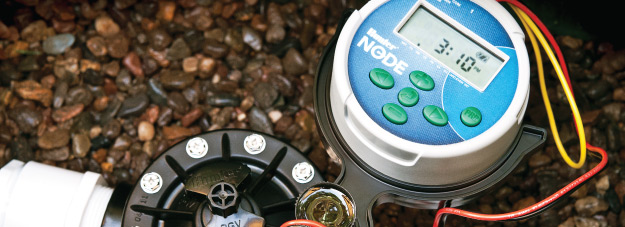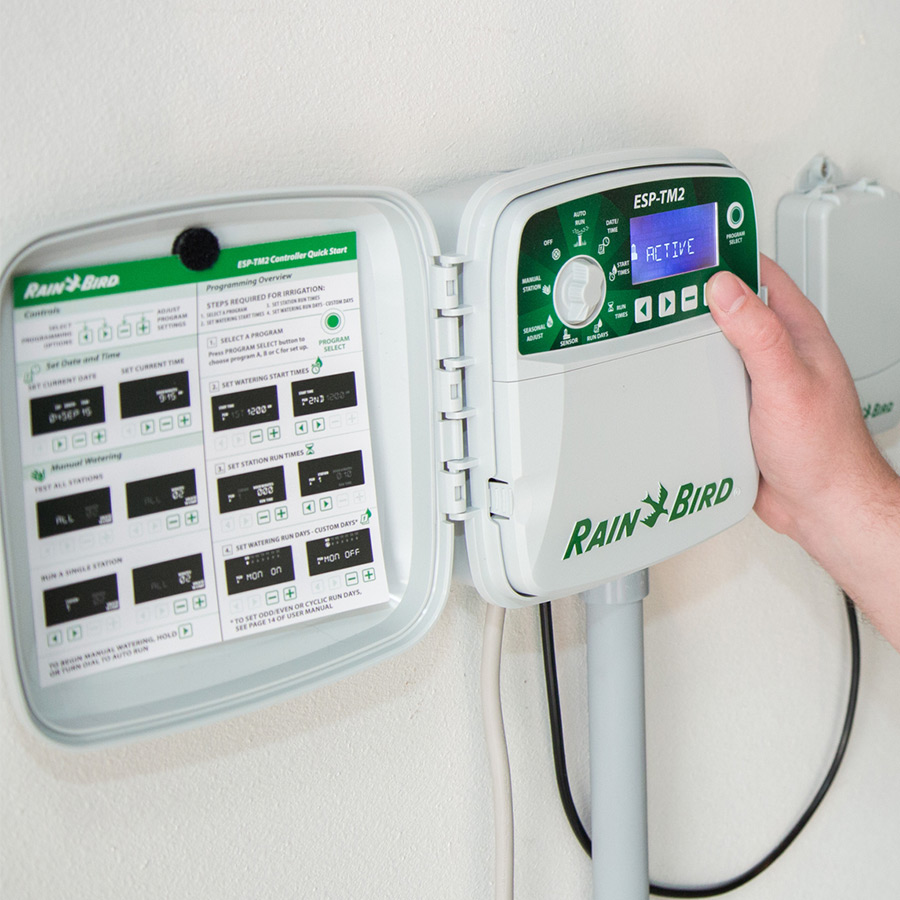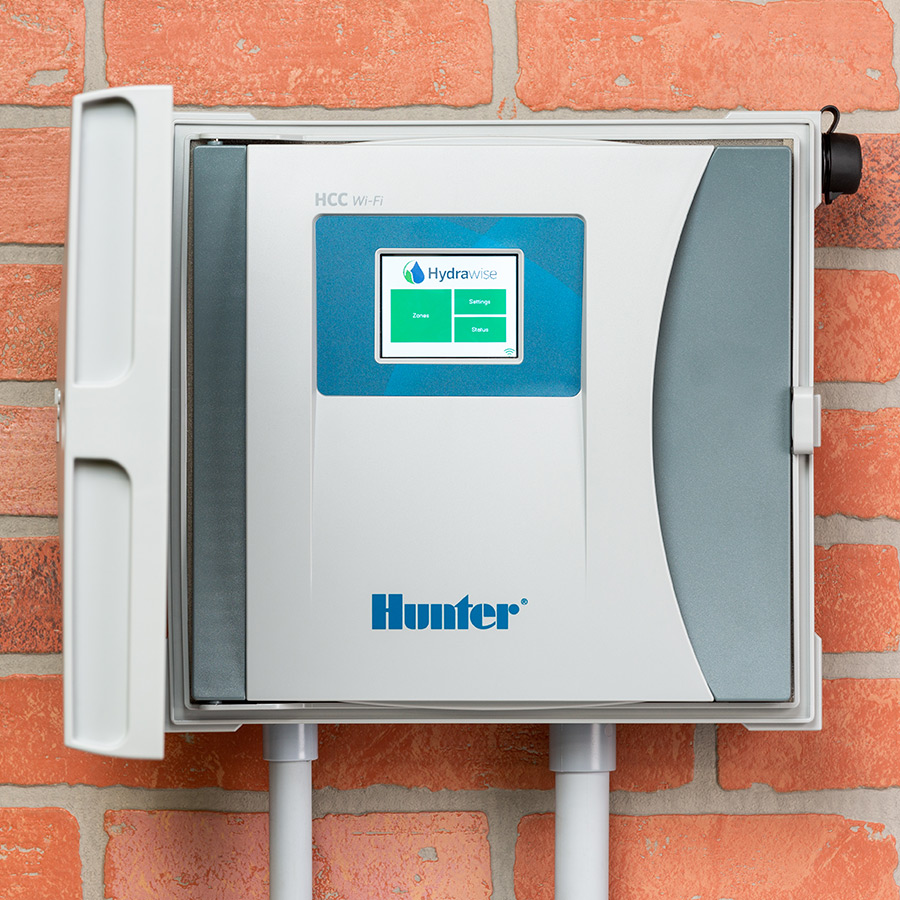How to Choose a Controller
In this guide, we will go over the different options available in Irrigation Controllers and which one works for you. Irrigation controllers can range from very basic to extremely intricate.
Options to Consider
- AC or DC Powered
- Number of Zones
- Sensors and Reporting
- Wifi and other advanced features
Do I Need an AC or DC Controller?
Irrigation controllers come in either AC or DC powered options, with the AC option being powered by the standard NZ 3 pin power plug and the DC options being powered by batteries.
- AC stands for Alternating Current.
- DC stands for Direct Current.
The decision is made for you, whether you do or do not have power available to the area you want to irrigate. If you have no options for a power supply, you will have to go for a DC Controller.
If you have the option of power, then you can have an AC controller. AC controllers usually have more features with more sensors options, WiFi capabilities etc. AC valves are typically cheaper than DC counterparts, but you are paying for the power usage. DC controllers can also be more discreet as they can be hidden away inside the valve box.




AC Controllers
AC Powered controllers are usually 240V with a 24V transformer inbuilt for the solenoid valves. They typically have a 3 pin plug (standard NZ plug) to be easily installed in your home.
AC Controllers can range from anywhere between 4 to 54+ zones. The standard AC controllers are 4, 6, 8, or 12 fixed zones, with some going higher. Fixed controllers are pre-built with the set amount of stations available. Some AC controllers are expandable or modular (more on this below) and can go as high as 54+ stations on one controller.
Usually installed on the side of a wall (inside or outside) depending on the model. the price is usually around the same as DC but will go higher for more advanced features and zones.
The benefits of going AC over DC is the features available. AC controllers have a larger range of Zones able to control; some also come with more sensor ports and options like Wifi to enable weather-predicting irrigation cycles.
Pros:
- The number of zones/stations is higher.
- More advanced features
- WiFi
- Sensor Ports
- Expandable
- Run and program times
- Alerts/Reports
- Solenoid valves are cheaper.
- Should never run out of power
Cons:
- Running Costs
- Installed on the side of a building (not discreet)
- Requires a Constant Power Supply
DC Controllers
DC Powered controllers are usually battery powered and are a great solution when no power is available.
There are two types of DC Controllers, Tap Timers & DC Controllers.
Tap Timers usually have 1, 2 or 4 outlets, and you commonly find in Bunnings or Mitre 10. These controllers can be excellent for some situations but won't give you the functionality or lifespan of a DC Controller. Tap Timers commonly run on 2 or more AA Batteries, are designed to be outdoors (model dependant) and situated on the garden house tap.
DC Controllers are a lot similar to the AC Controllers as they run a DC Solenoid Valve to control water flow. This allows for a much longer lifespan, higher operating pressures and flow rates, more features and overall, a better controller.
DC controllers are capable of 1, 2, 4, 6 and some with 12 stations from one controller. These timers commonly run 1-2 9V Batteries that can last 2+ years depending on the watering schedule.
Both tap timers and controller can have Bluetooth capability, allowing you to programme the controller remotely. The benefits of a DC powered controller is in a remote area or lack of power supply, you can still get a reliable irrigation system running.
Pros:
- Irrigation system in remote areas/lack of power
- Tap Timers are ideal for simple start-up systems.
- DC Controllers give you the reliability of an AC controller.
- No cost of running (excluding the cost of battery replacements)
Cons:
- A limited number of stations
- Tap Timers have a shorter lifespan.
- Risk of the battery running out without warning
- Solenoid valves are more expensive.



How Many Zones/Stations Do I Need?
The number of zones/stations a controller has, reflects the number of different areas you have broken the irrigation down to.
The decision is relatively easy in regards to selecting a controller. The number of stations will determine the minimum size of the controller.
There are a couple of different things to consider for the controller.
- Am I going to expand the irrigation at a later date?
- Fixed Stations or Non-Fixed
We constantly find clients have 4 areas of irrigation, so we decide to get a 4 station controller, but later want to add another zone and are limited by the controller. You can get a 6 zone controller for a slightly higher initial cost and save yourself some future inconvenience.
Fixed Stations are controllers with a set number of station capable of wiring in. Typically these are 4, 6, 8 or 12 stations.
Non-Fixed controllers allow for expansion modules to be added to the controller at later dates. These controllers commonly start with a 6 or 12 station controller and can expand anywhere up to 60+ stations.
Sensors and Reporting
Sensors are a big factor in irrigation controllers. Each brand will have its own variety of sensors, and they can range from rain, wind, solar, soil, freeze etc.
Each controller should state the number of sensor ports available and can range typically from 0 - 4. The more advanced the controller, the more sensor ports available. AC Controllers have at least a minimum of 1 sensor port, and the DC controller ranges from 0 to 2. Taps Timers do not commonly have sensor ports.
Some sensors are only available for certain controllers. For example, the flow meter sensor is a separate port and requires advanced controller features.
Reporting is an important part of irrigation controllers, especially for commercial, horticulture and agriculture systems. Reporting and Alerts are commonly found in AC controllers only and require access to the internet.
Examples of reports available are
- Evapotranspiration
- Water Usage
- Temperature and Rainfall
- Electrical Diagnostic, and more.
The other benefit is the alerts that can be set up on certain reports and send an SMS or Email to the owner.


WiFi Controllers
WiFi controllers offer many features, such as the reporting and alerts mentioned above and weather prediction. The big benefit is being able to access and control your irrigation from anywhere in the world. WiFi controllers require access to the Internet, but there is a way to get around the problem for rural or remote areas. Using a burner mobile phone and hot-spotting to the controller, you can access all the WiFi controllers' features without having to set up an internet modem.
Weather prediction is a great tool to help prevent over or under watering during the varying weather elements. The weather prediction can adjust your system to water more when it expects dry and hot periods and cut the irrigation watering when rain or high winds are expected. This feature can really save your crops, money and time. Most controllers connect to the nearest weather station in your area. Still, a few offer the option to have a dedicated weather station on your GPS location for an additional fee.
Landscape & Residential
For a Landscape or Residential system, you can probably go without the reports, WiFi, sensors, and advance controllers' alerts.
Things to consider:
- The lifespan you expect from the controller.
- AC or DC
- Budget
If you don't mind about the shorter lifespan or are on a budget for the system and want a simple, easy to set controller. Tap Timers would be a good start point.
If you have access to AC power but want a little more reliability out of the controller, go for the DC Controllers, like the Hunter Node or Rain Bird WPX. If you have access to power, you can look at the Hunter X2, Rain Bird TM2 or Orbit Bhyve.
If you want the bells and whistles for your system, you can start looking at the different WiFi controllers, such as the Hydrawise.



Horticulture & Commercial
Horticulture or Commercial controllers are a bit trickier to decide as you have a lot more to consider.
Things to consider:
- AC or DC
- Budget
- Reporting/Alerts
- Frost Irrigation
- Number of Stations
All of these are important features you may want to consider when deciding on a controller. If you need more advice talk to one of our experts at 0800 130 905

Decoder System
Modular Decoder Systems are a way for your controller to have up to 54 stations with only a two-wire cable needed. Each solenoid valve requires a decoder wired in, and this allows the controller to identify each solenoid valve. The decoder system's benefit has a two-wire cable for your whole system and accurate feedback on individual solenoid performance.
This is a complicated system, and best to consult one of our experts.
